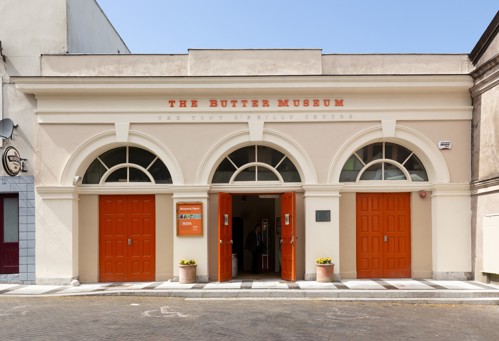O’Connell Square, Shandon
Open 11am to 4pm
The Cork Butter Exchange was the largest in the world in the 1800s. The butter market began near the corner of Butter Market Lane and Church Street where the butter and hide cranes were situated. In 1849 the Committee of Merchants, who operated the market, began to acquire houses around the weigh-houses to create space new market building. The impressive portico of the Butter Exchange, designed by the county surveyor Sir John Benson, was completed in 1849 and by June of 1850 Benson had completed the new market.
The spacious new market building greatly speeded up the process of inspecting and grading butter. On one day in June 1850 some 2,500 firkins (quarter barrels) of butter passed through exchange, the inspection of which was completed at 2pm, an operation which would previously have taken hours longer. The Firkin Crane building was constructed between 1853-5. Here firkins were weighed and washed using water collected by an ingenious rainwater harvesting system on the roof.
Cork’s dominance of the butter market began to fade in the late 1800s, when firkins of Cork butter began to seem old fashioned and expensive. The Exchange closed in 1925. The building later housed O’Gorman’s Hat Factory, which was destroyed by fire. The exchange was redeveloped as Shandon Craft Centre. The museum building was initially developed as offices for the Irish Ballet Company in the 1980s – but was repurposed in the late 1990s as The Butter Museum. The museum tells the incredible story of how Cork-branded firkins carried the labours of Munster farmers around the world and how butter remains one of our great international success stories.
Butter Making Demonstrations will take place in The Butter Museum throughout the day as part of Cork Heritage Open Day.



